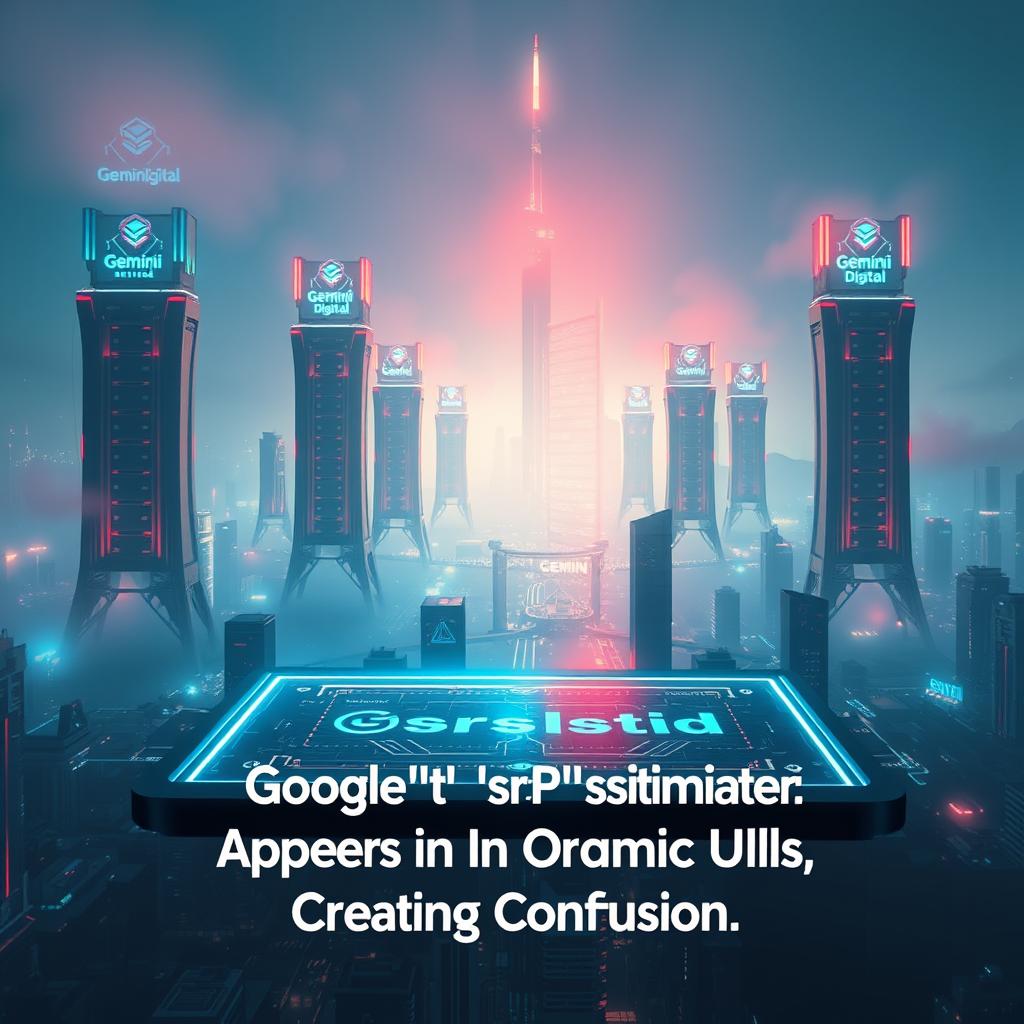Recent data reveals that over a quarter of major websites are experiencing unusual parameters in their organic URLs. This trend indicates the unexpected appearance of Google’s ‘srsltid’ parameter, causing confusion for both marketing and technical teams. Initially seen in Merchant Center campaigns, it now appears on core content pages. Many fear it could lead to duplicate content issues, inflate indexing counts, and disrupt search engine optimization efforts.
Experts speculate that integration with NLP might be behind these additions. Yet, the impact on rankings remains uncertain. This development has sparked widespread concern and calls for closer monitoring to mitigate risks.
Key Takeaways
- Unexpected parameters can alter organic URLs.
- Experts note confusion around analytics accuracy.
- Search engine optimization may be impacted by URL changes.
- Google’s ‘srsltid’ parameter surfaced beyond Merchant Center campaigns.
- Close tracking helps detect duplicate content risks.
- NLP advancements might drive these appended parameters.
What Is the ‘srsltid’ Parameter?
The google srsltid parameter is a unique tag introduced in Google’s shopping tools. It was created to track user engagement on product listings. This parameter attaches specific codes to URLs, enabling merchants to analyze each link’s performance.

This metadata goes beyond just product pages. Some analysts have spotted unusual strings on blogs, category listings, or brand pages. This raises concerns about website organization and the possibility of serp confusion.
There’s a debate about whether these tags impact website ranking or distort Google search reports. The tracking codes might fragment traffic data, making url optimization more complex. Content creators often experience inflated page counts when these tags appear on non-product links.
Brands strive to maintain precise metrics for each search result. This precision allows them to measure user behavior and campaign success accurately. The parameter has a valid purpose but needs careful monitoring to avoid confusion.
- Tracks engagement on multiple page types
- Helps merchants analyze user flow
- Causes unexpected insights in analytics
Stakeholders rely on consistent analytics for strategic decisions. The presence of extra tags can skew traffic attribution and complicate comparisons. Marketing teams often use custom filters to clean reports and improve clarity. A structured approach to parameter handling leads to more insightful metrics and better campaign performance. Quality data enhances content optimization and brand reach. Teams uncover valuable insights by removing clutter.
| Parameter | Key Use | Possible Influence |
|---|---|---|
| google srsltid parameter | Tracks listing performance | Data segmentation |
| Other tags | User attribution | Combined analytics |
Google’s ‘srsltid’ Parameter Appears In Organic URLs, Creating Confusion
Many site owners notice unexpected strings when they review organic URL links in their analytics tools. These additions often spark worry about how crawlers interpret page versions. Some wonder if duplicated entries might affect a site’s placement in search results.

Tracking Parameters and SEO Relevance
The presence of a tracking parameter can lead to questions about inflated metrics or skewed data. Some experts study url parameters to see if they create multiple indexed versions. A closer look reveals that these appended fragments serve as a way to collect engagement insights without always disrupting a site’s crawl patterns. It is wise to confirm that canonical pages remain recognized by the google search engine.
Impact on Website Ranking
Some analysts believe these extensions do not usually harm overall website ranking. They may cause confusion during audits if they appear to inflate link structures. Monitoring any abnormal shifts within search results helps identify whether duplicated data is affecting a page’s integrity. Site administrators often treat these parameters as standard URL attachments, provided they preserve a clear signal regarding primary content.
Origins of URL Parameters in Google Search
Google has employed URL parameters to track user actions and enhance search precision. Initially, these parameters were used to link merchant data with product listings in tools like Merchant Center.
The introduction of the google’s srsltid parameter for e-commerce analytics has piqued interest. Its appearance on non-commercial websites has sparked curiosity about Google’s intentions behind this update.
Merchant Center once utilized specialized tags for tracking conversions and user insights. The emergence of Google’s ‘srsltid’ parameter is believed to stem from broader indexing strategies. The exact timeline of its introduction remains unclear. Some argue it’s part of a more sophisticated data capture system, beneficial for websites seeking deeper analytics.
An seo specialist monitoring these developments notes the significant impact on link analysis. This evolution continues to spark debate among technical teams, weighing the benefits and drawbacks for seo strategies. Understanding the origins of these parameters offers insight into Google’s mechanisms and their evolution across various platforms.
Some professionals link these changes to Google Analytics, as additional data points can enhance personalization. Others speculate that Google refines ongoing tests to improve ad relevance. Each perspective highlights the dynamic and unpredictable nature of the search landscape. Analysts study past trends to forecast future developments.
This background aids site owners in anticipating shifts in parameter tagging. Teams that adapt quickly maintain performance stability. Ongoing research uncovers new strategies, deepening our comprehension of this algorithmic world. Experts observe that user activity patterns influence tagging formats in unforeseen ways.
How the ‘srsltid’ Parameter Affects Search Visibility
Marketers track page variations to grasp changes in website traffic. The srsltid parameter raises questions about its impact on google rankings and data accuracy. Some platforms view these URLs as distinct pages, potentially inflating page counts.
SERPs and Ranking Shifts
Monitoring serps is essential for performance evaluation. Small ranking changes may occur with these parameterized URLs. Yet, these shifts rarely change a page’s fundamental ranking. Reports sometimes consider these links unique, prompting teams to confirm canonical paths.
Organic Search vs. Paid Search
Confusion arises when srsltid parameter segments overlap with paid ads. This makes distinguishing organic success from sponsored clicks challenging. By tracking carefully and following best practices, brands can clarify these differences. They gain a clearer understanding of user behavior, identifying unpaid traffic sources.
| Parameter | Key Purpose | Effect on Visibility |
|---|---|---|
| srsltid | Link tracking | Minimal ranking impact |
| Other URL Parameters | Session control | Short-term fluctuations |
Possible Reasons Behind ‘srsltid’ Implementation
Professionals are curious about the new tracking code in google organic urls. They speculate it’s linked to enhanced digital marketing strategies. Others believe it’s a move towards better seo best practices and understanding user behavior. This could signal changes in how people search online.
The parameter might connect e-commerce sites with various analytics tools. It’s thought to track visitor movements, revealing trends in larger campaigns. This could help brands focus on detailed metrics.
Privacy and data reliability concerns have been raised. Some worry that more tracking fields could make standard metrics harder to follow. Yet, with careful planning, this can be managed. A structured approach is key for valuable insights for website owners.
Data Collection for Google Analytics
These enhancements could offer rich insights. Google analytics might track user paths from product pages to detailed content. This would give developers a better understanding of user interactions across different content types.
Experimentation with NLP Keywords
There’s also a focus on testing linguistic patterns. Observers have noted efforts to improve how phrases are recorded. This could help refine web ranking signals in the future.
Confusion Among SEO Specialists
Keeping up with user data can be tough when unexpected site parameters show up in analytics. SEO specialists often face srsltid confusion during audits, questioning how user attribution works. These issues make it harder to understand seo parameters, needing extra care. Experts advise checking each new link detail to avoid data errors.
Site owners see inflated page counts and misattributed traffic, causing confusion in marketing metrics. Missing or duplicated labels can harm website optimization and make budget planning tricky. Some worry that constant parameter changes might hurt search engine rankings, but the evidence is unclear. Tools like Screaming Frog or SEMrush can spot these odd links during regular checks.
Teams suggest keeping an eye on referral paths across various analytics dashboards. Detailed reporting can reveal patterns behind unusual URL structures. With clear insights, businesses can safeguard their online presence and foster meaningful engagement. Thorough audits help minimize surprises, ensuring data accuracy for strategic planning and growth.
Best Practices for Managing URL Parameters
Site owners often face challenges with complex settings that lead to search engine confusion. Extra elements in a URL can cause indexing and navigation issues. Implementing clear strategies helps teams manage each parameter effectively, avoiding traffic and visibility problems.
Experts agree that google’s ‘srsltid’ impacts user paths significantly. Careful configuration of each parameter minimizes data mess and enhances site tracking. This approach aligns with the evolving google algorithm signals.
Using Google Search Console
Administrators use this platform to spot unnecessary parameters and guide crawlers to key pages. Customizable settings allow blocking of certain requests, giving a better control over indexable content. This leads to better alignment with those seeking effective seo techniques.
Ensuring Website Optimization
Keeping the site clean reduces load times. Cutting down on duplicates and monitoring caching ensures resources are always available. These efforts lower bounce rates and build trust, essential for refining popularity signals.
Seeking Expert Guidance (+1 (929) 989-3343)
Deeper consultation is advisable when data streams become complex. Skilled teams monitor each parameter and safeguard campaign integrity. This ensures consistent performance and boosts confidence in adapting to changing conditions.
| Action | Benefit |
|---|---|
| Regular Parameter Audit | Reduces duplicate content |
| Analytics Filtering | Maintains cleaner data sets |
| Canonical Tag Usage | Resolves ranking conflicts |
Implications for Digital Marketing Campaigns
Digital marketers are observing new trends in traffic patterns. The introduction of google’s ‘srsltid’ parameter in organic URLs is reshaping how campaigns are evaluated. This change can redefine the success of various channels, prompting a reevaluation of budget allocations.
Adjustments in budget allocation based on google’s srsltid parameter may yield mixed results. The interplay between the google search algorithm and a dynamic website structure impacts visibility. This is critical for large product lines or extensive blog campaigns. It raises important questions about maintaining consistent data across different analytics platforms.
- Maintain canonical tags on parameter-laden pages
- Review multi-touch models for possible tracking gaps
- Verify analytics for consistent search traffic patterns
Teams should ensure direct tracking parameters are correctly set up. This is to avoid redirects to unexpected sources. Consistent data is essential for accurate marketing ROI. Proactive steps are necessary to safeguard campaign integrity and foster growth.
Changes in attribution can unexpectedly alter marketing ROI calculations. Some brands might observe an increase in visits tagged as product-related, even from non-commerce pages. This can distort the view of which efforts are most effective. Detailed analysis is critical before making significant changes to campaign planning or resource allocation.
Teams excelling in dynamic environments view new parameter-based shifts as chances for enhancement. Aligning analytics with real-world behavior builds trust and supports steady growth through precise digital marketing strategies. Reliable insights come from evaluating each campaign with detailed scrutiny.
| Key Action | Benefit |
|---|---|
| Enable robust tagging | Clearer attribution in campaigns |
| Optimize site structure | Improves user experience and SEO |
Addressing Technical Concerns in Web Development
Site functionality relies on consistent structures that reduce clutter and maintain clarity. The presence of the google ‘srsltid’ parameter in URLs raises questions about efficiency. This necessitates deliberate approaches that balance user experience with SEO optimization.
Some platforms view each appended parameter as a new page, distorting data in search engine results page analysis. This can impact how search engine algorithms determine relevance. Developers must refine site configurations to address this. Examining logs and maintaining a stable release environment confirms that these pages do not overwhelm resources.
URL Structure and Duplicate Content
Parameter additions often trigger duplicate content flags, confusing crawlers and complicating indexation. Overlapping data can inflate server usage, necessitating better caching methods. Maintaining organized URL patterns is essential for efficient web development practices.
Implementing Canonical Tags
Canonical tags inform crawlers of a preferred page version. By guiding bots to the primary URL, sites avoid duplication signals tied to the google ‘srsltid’ parameter. This strategy keeps the main address visible to users and supports stable indexing across multiple pages.
| Concern | Action |
|---|---|
| Excess Page Variants | Consolidate parameters for accurate reporting |
| Duplicate Signals | Use canonical links and consistent site structure |
| Server Impact | Deploy robust caching and monitor usage |
Leveraging the ‘srsltid’ Parameter for Insights
Savvy marketers explore the google srsltid parameter to uncover new opportunities. This code tracks user paths that could lead to higher conversions. It also enhances search visibility. Teams analyze appended URLs to understand audience preferences. They monitor post-click engagement to refine their strategies.
This method prevents website confusion from deterring buyers. By examining each path’s performance, teams gain valuable insights. These insights improve campaign outcomes across various platforms.
Brands that use nlp keywords in their analytics follow a detailed plan. They study common phrases to find new ways to engage. By aligning this data with parameter-based insights, they better understand user intent. This approach strengthens connections and fosters loyalty in the digital world.
For those who want to track progress closely, google search console is invaluable. It shows how srsltid affects specific user journeys. Teams analyze bounce rates, conversions, and time on page. They then tailor their responses to ensure a relevant experience for each visitor.
- Evaluate parameter-based click patterns
- Compare user flows across multiple segments
- Identify high-conversion entry points
- Adapt landing pages for improved retention
By following these steps, brands can guide their digital future with srsltid evaluations. Teams identify key patterns, refine strategies, and meet audience needs precisely. This focus on user journeys enhances loyalty and conversions. Detailed data analysis leads to long-term improvements and increased reach.
| Parameter | Focus | Benefit |
|---|---|---|
| srsltid | Unique route tracking | Improves audience insights |
| search visibility | Ranking awareness | Broadens organic reach |
Recommendations from SEO Experts
Top names in digital marketing share actionable tips for dealing with changes from Google parameter updates. They emphasize the importance of conducting thorough audits to uncover hidden issues. By monitoring click-through rates, they can spot even the slightest changes in visibility.
Experts recommend a constant review of NLP keywords. This involves tracking organic traffic and understanding user intent to match content with audience needs. Detailed statistics help gauge the success of changes and improve on-page elements for better reach.
When discussing Google’s SRSLID parameter, SEO specialists suggest a balanced approach. They advocate for focusing on link equity and refined targeting. Some use custom analytics filters to manage redundant data. This strategy helps maintain search rankings and avoid confusion from unexpected URL changes. Clearer data enhances online presence in competitive markets.
Adhering to Google Algorithm Updates
Experts highlight the importance of keeping up with Google’s official announcements. They recommend using structured markup to address new ranking signals. They also stress the significance of user signals, like time on site, for maintaining domain authority.
Maintaining Search Engine Ranking
Site owners can improve meta tags and canonical references to prevent index bloat. This strategy protects performance during algorithm changes. Regularly testing updates allows webmasters to adjust their sites, ensuring stable rankings.
Collaborating with marketing teams is key to developing cohesive strategies. Experts suggest scheduling regular site audits and refining performance goals to stay competitive. This teamwork strengthens security, compliance, and overall success.
Conclusion
Google’s srsltid parameter often highlights deeper changes in the platform’s tracking process. It has not directly led to penalties for most sites. The extra characters can cause confusion, highlighting the need for thorough analytics management.
Setting up clear canonical tags remains a key strategy to maintain ranking stability. This is essential for site owners who use platforms like gemini digital hub or Google Merchant Center. They may see this parameter in their organic data.
Teams that integrate gemini digital hub track these URLs to improve results. Google’s activity suggests it is gathering detailed insights across different channels. Being vigilant about URL formatting and consistent monitoring is key. This approach helps preserve user trust and data clarity. It ensures each page’s visibility remains strong in the ever-changing digital landscape.
FAQ
Why does Google’s srsltid parameter appear in organic URLs and create confusion?
Google’s srsltid parameter was initially for Merchant Center tracking. Now, it shows up on standard organic URLs. This unexpected appearance can cause confusion and lead to inaccurate data in SEO efforts. It doesn’t directly harm ranking but complicates analytics, causing inflated page counts and making it hard to track user engagement.
Does the srsltid tracking parameter negatively impact search engine ranking?
Google says srsltid doesn’t lower a site’s search result position. Yet, it might cause indexing issues if multiple parameterized URLs are seen as duplicates. To avoid this, using canonical tags and configuring URL parameters in Google Search Console are key. These practices help mitigate any unintended effects on search visibility.
Could the srsltid parameter be causing duplicate content issues?
The parameter itself doesn’t create duplicate content. But, it can lead to multiple page versions if a site’s internal linking or crawling rules aren’t set up right. To prevent duplicate indexing, SEO experts often use canonical tags on preferred URLs. They also use Google Search Console’s parameter settings to reduce redundant indexing.
How do these parameterized URLs affect analytics data in Google Analytics?
srsltid-laden URLs can split website traffic reporting in Google Analytics. This splitting can distort metrics like pageviews and unique visits. By filtering the srsltid parameter in Google Analytics or using consistent tagging, you can keep reporting clear and avoid confusion.
Are there broader implications for digital marketing when dealing with srsltid URLs?
Yes. Inflated reporting can mislead multi-touch attribution models, making it hard to differentiate organic search from paid or Merchant Center traffic. Understanding srsltid’s role in SERPs helps digital marketing teams adjust budgets and assess campaign success more accurately.
What role does NLP (natural language processing) play in the expansion of srsltid?
Some believe Google uses NLP keywords to enhance personalization or refine its algorithms. By attaching srsltid to various organic pages, Google can collect detailed user interaction data. This data may help improve its natural language processing capabilities.
Which SEO best practices minimize the risk of data fragmentation from srsltid parameters?
Experts suggest: • Using Google Search Console to guide indexing rules for URL parameters • Implementing canonical tags for URLs potentially duplicated by tracking parameters • Using robust analytics filters to unify data, maintain clarity in user flows, and avoid inflated metrics • Reviewing site performance with an eye on page speed and server load, ensuring efficient site performance and consistent user experiences
How can web development teams address technical concerns with parameter-laden URLs?
For effective website optimization, development teams should configure caching systems to treat srsltid variants as the same page. Ensuring a stable URL structure, applying canonical directives, and monitoring server logs for excessive crawling are key. These steps help maintain efficient site performance and consistent user experiences, preserving ranking signals.
Where can website owners find expert guidance for ongoing srsltid issues?
For specialized insights on managing srsltid parameters, owners can call +1 (929) 989-3343. Consulting with an SEO specialist can help tailor solutions to each site’s unique environment, ensuring online visibility.






